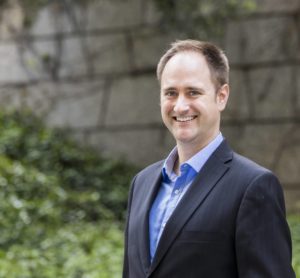149: Sean Quinn on Vertical Farming
Considering design in architecture and its impact on urban agriculture.
 Sean leads the Sustainable Design practice of HOK San Francisco, a global design, architecture, engineering and planning firm. He’s responsible for coordinating services across the firm’s Pacific Region. His approach to sustainable design is grounded in climatically tailored solutions that respond to the economic, environmental, and cultural context of cities.
Sean leads the Sustainable Design practice of HOK San Francisco, a global design, architecture, engineering and planning firm. He’s responsible for coordinating services across the firm’s Pacific Region. His approach to sustainable design is grounded in climatically tailored solutions that respond to the economic, environmental, and cultural context of cities.
Sean complements his design practice with research in green building technologies including, among other things, urban and vertical agriculture. Sean is a Lecturer at Danube University Krems, Austria, was an Assistant Professor at the University of Hong Kong, and is a frequent lecturer at international universities and conferences. For the past several years, Sean has led research in Urban & Vertical Farming, and developed a prominent exhibition on urban ecology and biomimicry at the Hong Kong-Shezhen Biennale of Architecture and Urbanism. His research has been presented to key stakeholders at the United Nations, as well as for multiple international governments, diplomatic, private, and non-profit organizations. Sean believes that urban agriculture can provide a multi-faceted solution to the health and resilience of cities while catalyzing community and economic growth
In This Podcast: Greg gets to interview Sean, who works to meld sustainable architectural design with urban agriculture for one of the largest global design firms. Sean talks about how this field has changed over the years and is tackling the issues of food systems and just connection to nature in highly urban landscapes like Honk Kong and San Francisco. Just by focusing on these issues, he has developed a sincere passion for designs that build solutions combining flora and human interaction.
Listen in and learn about:
- His background in architecture and how that let him to the energy-water-food nexus
- What the energy-water-food nexus is and how the three aspects work together
- His path to the HOK organization and urban agriculture
- What the number one source of ecological consumption with carbon emission and overall ecological use is in one of the tallest densest cities in the world
- How agriculture changed over time in Hong Kong
- How Hong Kong changed from about 75% self-sufficiency to about 2% in regards to food-resiliency
- Why rapid urban expansion has such a significant effect on agriculture
- What is happening in the current times with the urban agriculture movement
- Why as an architecture organization, HOK is interested in urban agriculture
- The goals to make the cities healthier and biophilic
- Resiliency in urban, food, and social aspects
- His connection to vertical farming and why he is excited about this concept
- Why design is so important to our recognition and interaction with nature and our food
- Why he is interested in the social side of growing food in the workplace
- Some of his projects and what they look like including a healthcare facility with rooftop farmland, and others in design that are trying to increase greenspace
- Sky gardens and what they look like
- Other designs including transforming refuge floors on skyscrapers to greenspace
- Why he is so passionate about these design processes
- The changes in resource use and farming over the last five decades or so and why they are focusing on this in their projects
- The difference he sees in key issues between Hong Kong and California and even with those differences how that applies to the food system
- Why they are focusing on water wasting and reclamation in California design
- The November 10th event discussing agriculture in San Francisco at SPUR
- How urban agriculture has key issues that are important for cities everywhere and what he believes some of those issues are
As well as:
- How he has been described as either being on the bleeding edge or the cutting edge of ideas and how he has learned so much on the projects he has worked on around the world
- How he believes the exhibition he did in Hong Kong turned out to be a great success, and how he went in to the project in a protective manner and came out with a new awareness and a lot of new opportunities to make a difference
- Why he is naturally prone to reverse engineer things so that he can find solutions
- His advice to listeners is to get involved and he gives some options for ways we can do this
Book recommendations by Sean:
Mannahatta: A Natural History of New York City by Eric Sanderson
How to get in touch with Sean:
*Disclosure:
Some of the links in our podcast show notes and blog posts are affiliate links and if you go through them to make a purchase, we will earn a nominal commission at no cost to you. We offer links to items recommended by our podcast guests and guest writers as a service to our audience and these items are not selected because of the commission we receive from your purchases. We know the decision is yours, and whether you decide to buy something is completely up to you.






This is an important interview. Urbanization is happening and I found it comforting to know that people in a company as large as this architectural firm are thinking about food, water, and energy. Thank you for recognizing their efforts.